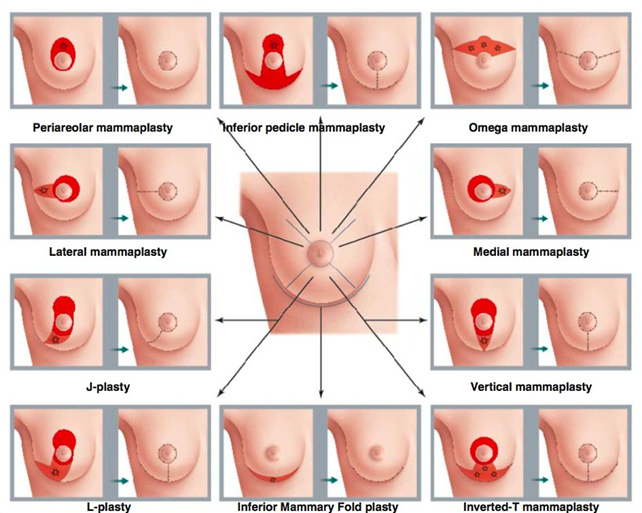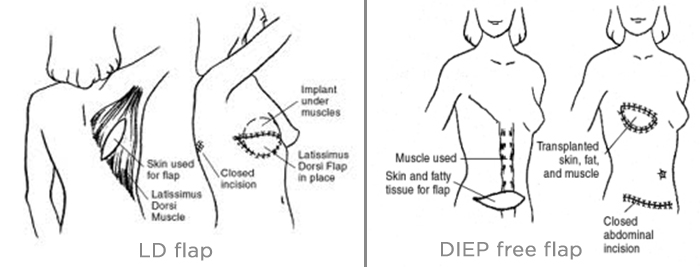Oncoplastic Breast Surgery comprises of new surgical approach that combines the principles of cancer surgery and plastic surgery, with the aim of optimizing cancer cure while maintaining the shape and symmetry of the breast.
Oncoplastic surgery has extended the scope of breast-conserving surgery (BCS), reducing both mastectomy (breast removal) and re-surgeries rates, while avoiding breast deformities.
Use of oncoplastic techniques has radically changed and expanded the boundaries of breast conservation surgeries and is now the preferred method of breast conservation worldwide.
It can be broadly classified into Volume displacement and Volume replacement techniques.
Volume Displacement– oncoplastic reconstruction for breast conservation from the mobilization of breast tissue and reshaping.
Some of these techniques are:
- Therapeutic Mammoplasty
- Round block technique
- Grisotti’s technique
- Batwing or Omega mammoplasty
- Racquet type mammoplasty
- Vertical reduction mammoplasty
- Lateral mammoplasty
- And many more.

Volume Displacement Techniques
Volume Replacement– involves more advanced mammoplasty techniques that allow resection of up to 50% of the breast volume and replacing it with autologous flaps.
Some muscle or myo-cutaneous or perforator-based flaps used for replacement are:
- LD flap
- Mini LD flap
- LiCAPS
- Thoraco-epigastric flap

Even if a patient requires or chooses mastectomy, she can undergo immediate breast reconstruction by DIEP free flap from abdomen or implant-based reconstruction.
Content Reviewed by – Asian Hospital Medical Editors
 Appointment
Appointment  Lab Report
Lab Report Find a Doctor
Find a Doctor  Health/Lab Packages
Health/Lab Packages 





